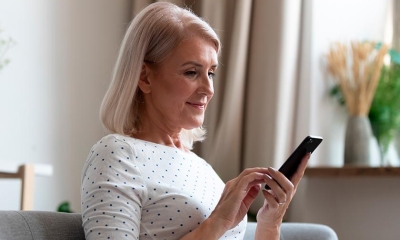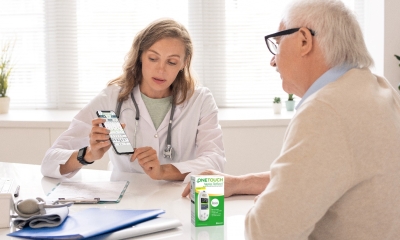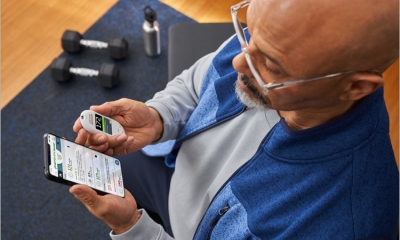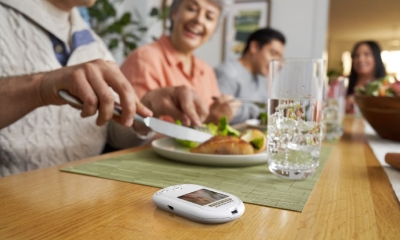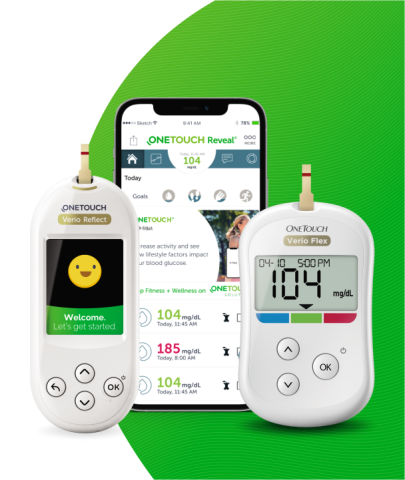CGM Frequently Asked Questions
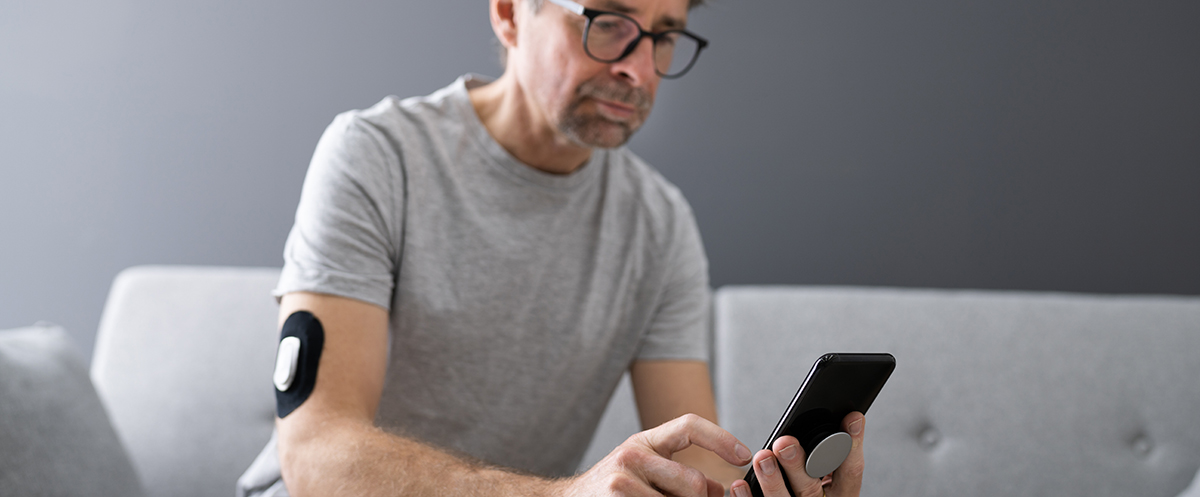
By: Diana Isaacs, PharmD, BCPS, BCACP, BC-ADM, CDCES, FADCES, FCCP
Many people with diabetes consider using continuous glucose monitors (CGMs) for their diabetes management, and CGMs have a lot of helpful features. Their use is expanding, and they benefit many people with diabetes. It is recommended to reach out to your healthcare team to learn if a CGM is right for you and, importantly, to continue to work with your healthcare team after getting a CGM to get the most benefit out of it and by customizing the different features and alerts.
What is a CGM?
Continuous glucose monitors, or CGMs, are small wearable devices that track glucose levels continuously throughout the day and night. Some CGMs display data continuously, while others only display data after being swiped by a reader or smartphone. Some CGMs can notify you of highs and lows to help you manage your glucose levels. CGM use has been studied and approved in adults and children as young as 2 years old. See the What is CGM article for more information.
How is CGM different than BGM?
Continuous glucose monitoring is different than blood glucose monitoring (BGM) via a traditional blood glucose meter. BGM measures the glucose level in the capillary blood vessels, whereas CGM measures the glucose in the interstitial fluid, which is the fluid between the cells in your tissues. BGMs check glucose at a given point in time and require a fingerstick. A CGM monitors glucose nearly continuously and records readings every 1-15 minutes, depending on the device.
What are the types of CGMs?
CGMs can be for either personal or professional use. Personal CGMs are owned by the person with diabetes and most of them can be used to make decisions about diabetes management. Professional CGMs are owned by the healthcare center. In this case, a healthcare provider analyzes data retrospectively to understand the glucose patterns of the patient. Some professional CGMs do not display the data while the person with diabetes is wearing it, but others do show the glucose data in real time.
How does CGM Work?
A continuous glucose monitoring system is comprised of three parts: a sensor, a transmitter, and a viewing device. The sensor sits on the skin, typically on the abdomen or the back of the arm, and contains a thin filament that goes through the skin into the interstitial fluid to measure the glucose level. It uses a transmitter to send the current glucose level to a receiver.
Some devices have the transmitter and sensor combined in one piece, while other CGMs require a separate step of attaching the transmitter to the sensor. Depending on which CGM device you are using, you may use a reader or receiver as your viewing device, or you may use a smart phone app.
See the What is CGM article for more information.
Who should use CGM?
A continuous glucose monitor is indicated for diabetes management. You should discuss with your healthcare provider if a CGM is right for you. Any person with Type 1 diabetes or any person with Type 2 diabetes using an intensive insulin regimen can benefit from a personal CGM due to its ability to provide continuous information on what the glucose level is doing. This makes it possible to detect unsuspected hypoglycemic events and see trends.
Those with Type 2 diabetes taking basal insulin can also benefit from a personal CGM. People with Type 2 diabetes who take oral medications or non-insulin injectables may also benefit from periodic use of professional CGM or from a personal CGM and should discuss using a CGM with their healthcare provider.
CGM use can allow a person to learn how food, medications, physical activity, stress and other factors impact glucose levels in real time and help them apply the learnings to better understand and manage their glucose levels. You should also have a backup blood glucose monitor for traditional blood glucose testing through fingersticks if you find your CGM glucose reading does not match how you are feeling, for use while your CGM is warming up, and for times when you may not be wearing your CGM.
Does insurance cover CGM?
A CGM device and supplies require a prescription. Many insurance plans will cover continuous glucose monitors, but often require a prior authorization to determine eligibility. The healthcare provider will need to submit the prior authorization to the insurance company to seek approval and the CGM will need to be covered by the patient’s plan. Individual plan coverage varies. Depending on the plan, the CGM device may be obtained directly from the pharmacy, but some insurance plans, including Medicare, require the CGM to be obtained through a durable medical equipment supplier. Depending on a person’s plan, they may have to pay a co-pay or first meet their deductible.
How long does a CGM last?
A continuous glucose monitoring sensor generally needs to be replaced every 7 to 14 days, depending on the device. The exception is one device that has an implanted sensor, which is replaced every 3 months or longer. For devices that have a detachable transmitter, this component can last 3 months to a year or more depending on the device. Some devices require that the transmitter be charged in-between uses.
How do I get a CGM?
Talk to your healthcare team and ask about your options. All continuous glucose monitors require a prescription. Professional CGMs can also be a great option to see what it’s like to wear a CGM and decide if a CGM is right for you. Once you decide that you want a personal CGM, you can either ask your healthcare team to initiate the process or visit the website of the specific device to initiate the process of verifying insurance benefits and facilitating a prescription request.
How do I set up alerts on a CGM?
Many continuous glucose monitoring devices allow for customized alerts. For example, one can set a high alert and a low alert. Many also have options to set rise rate and fall rate alerts to let you know if the glucose is rising or falling quickly. There are also options to repeat the alerts. For example, if a low blood sugar persists for 15 to 30 minutes, it could be helpful for the alert to repeat, so a person knows their glucose is still low. Some also have predictive alerts that can notify you if the CGM determines that the low or high glucose alert will be reached within a certain amount of time, such as 20 or 30 minutes. This can make it even easier to prevent low or high glucose levels.
Your healthcare team can work with you to customize these alerts. The goal is to optimize Time in Range, which is between 70mg/dL and 180mg/dL. The goal for most people is for the Time in Range to be 70% or more.
Alerts can be helpful to increase Time in Range but must be balanced in a way to avoid alert fatigue. Some people may set the low alert to 70mg/dL. Other people want to know if their glucose is falling earlier and may set it for 75 or 80 or even higher. Similarly, for the high alert, there are some who want to know when they exceed 180mg/dL, but many others who prefer to set a more relaxed high alert, such as 250 or 300. Some may even choose to turn off the high alert and only set alerts for low blood sugars. Keep in mind that with a CGM, you can look at your blood sugars at any time, so the alerts are there to help keep you in a safe range and to supplement your readings; they should not become an inconvenience.
Can I share my CGM data with others?
One of the many benefits of CGMs is that CGM data, including alerts, can be shared with friends, caregivers, loved ones, or clinicians through use of mobile apps. The number of people data can be shared with varies by device. Data sharing can provide the person with diabetes with peace of mind knowing they have extra support in monitoring their glucose levels.
While there are many benefits to using a CGM, it is important to talk to your doctor to find out if a CGM is right for you.
Sources:
Beyond Type 1. CGM: Continuous Glucose Monitoring. https://beyondtype1.org/cgm-continuous-glucose-monitor/. Accessed June 24, 2021.
Schumacher CA, Isaacs D, Collier I, Klinkebiel D. Use of continuous glucose monitoring to improve glycemic management: A clinican’s guide. https://doi.org/10.1002/jac5.1295
Megan Munoz. How is a Continuous Glucose Monitor Different than My Glucose Meter? https://type2diabetes.com/living/continuous-glucose-monitor. Accessed June 24, 2021.
Association of Diabetes Care & Education Specialists (ADCES). Personal Continuous Glucose Monitoring Implementation Playbook. https://www.diabeteseducator.org/docs/default-source/practice/educator-tools/cgm-playbooks/personal-cgm-playbook.pdf?sfvrsn=2. Accessed June 24, 2021.
Edelman SV, Argento NB, Pettus J, et al. Clinical implications of real-time and intermittently scanned continuous glucose monitoring. Diabetes Care 2018;41:2265–74.doi:10.2337/dc18-1150
American Diabetes Association. 7. Diabetes technology: Standards of Medical Care in Diabetes—2021. Diabetes Care 2021;44(Suppl. 1):S85–S99. https://doi.org/10.2337/dc21-S007. Accessed June 24, 2021.
Martens T, Beck RW, Bailey R, et al. Effect of Continuous Glucose Monitoring on Glycemic Control in Patients With Type 2 Diabetes Treated With Basal Insulin: A Randomized Clinical Trial. JAMA. 2021;325(22):2262–2272. doi:10.1001/jama.2021.7444
Related articles
US-OTB-2100107



